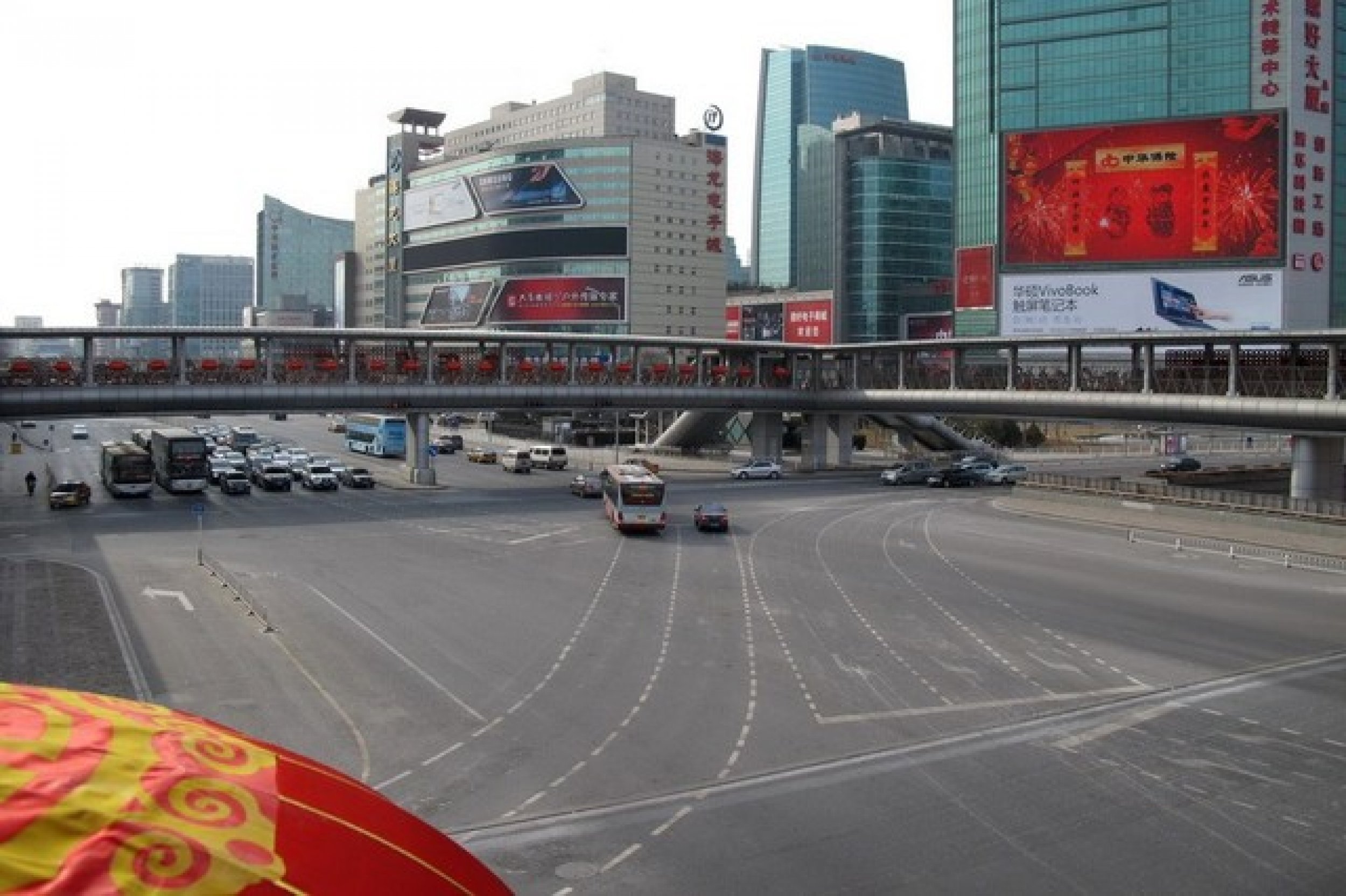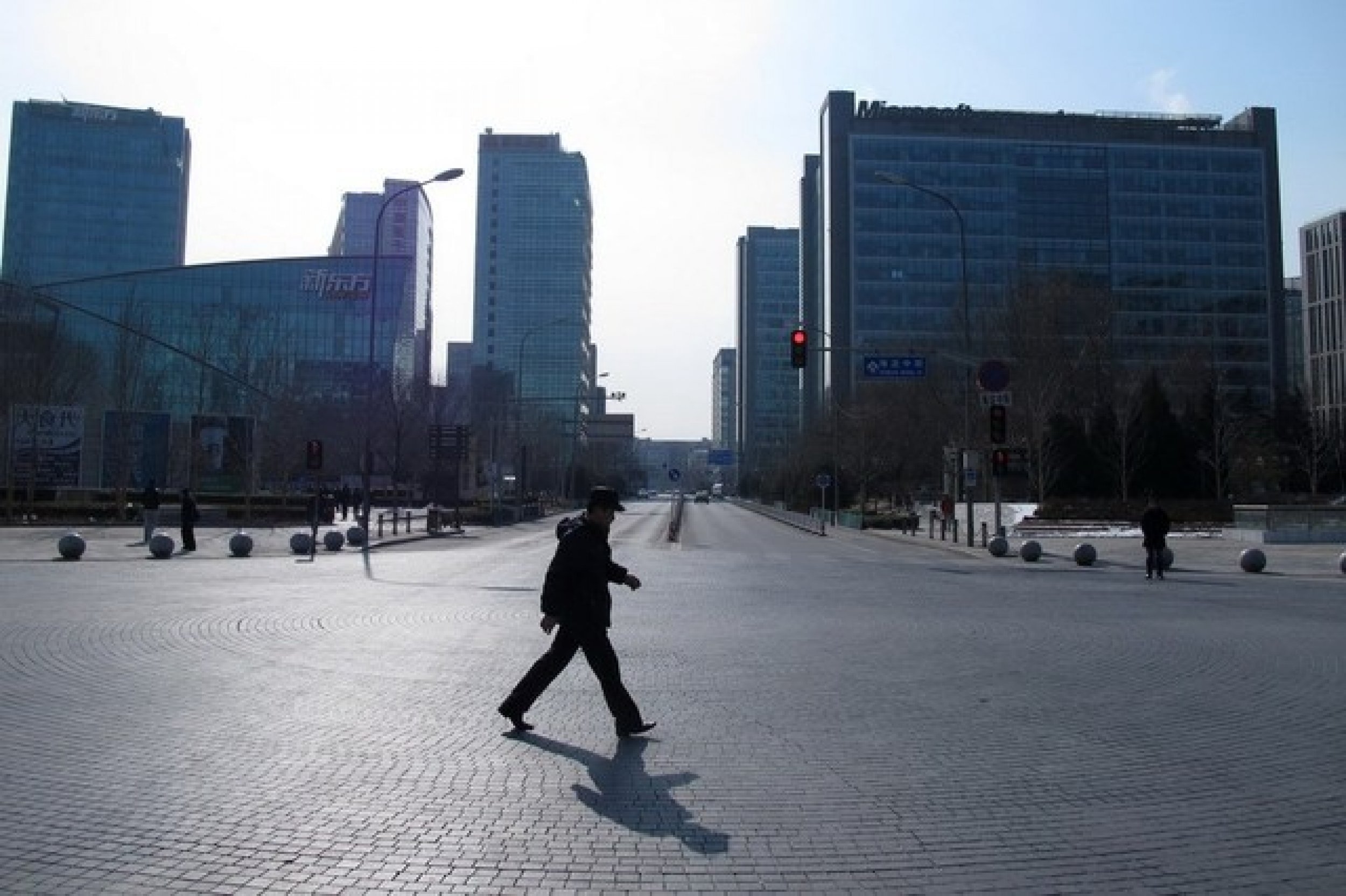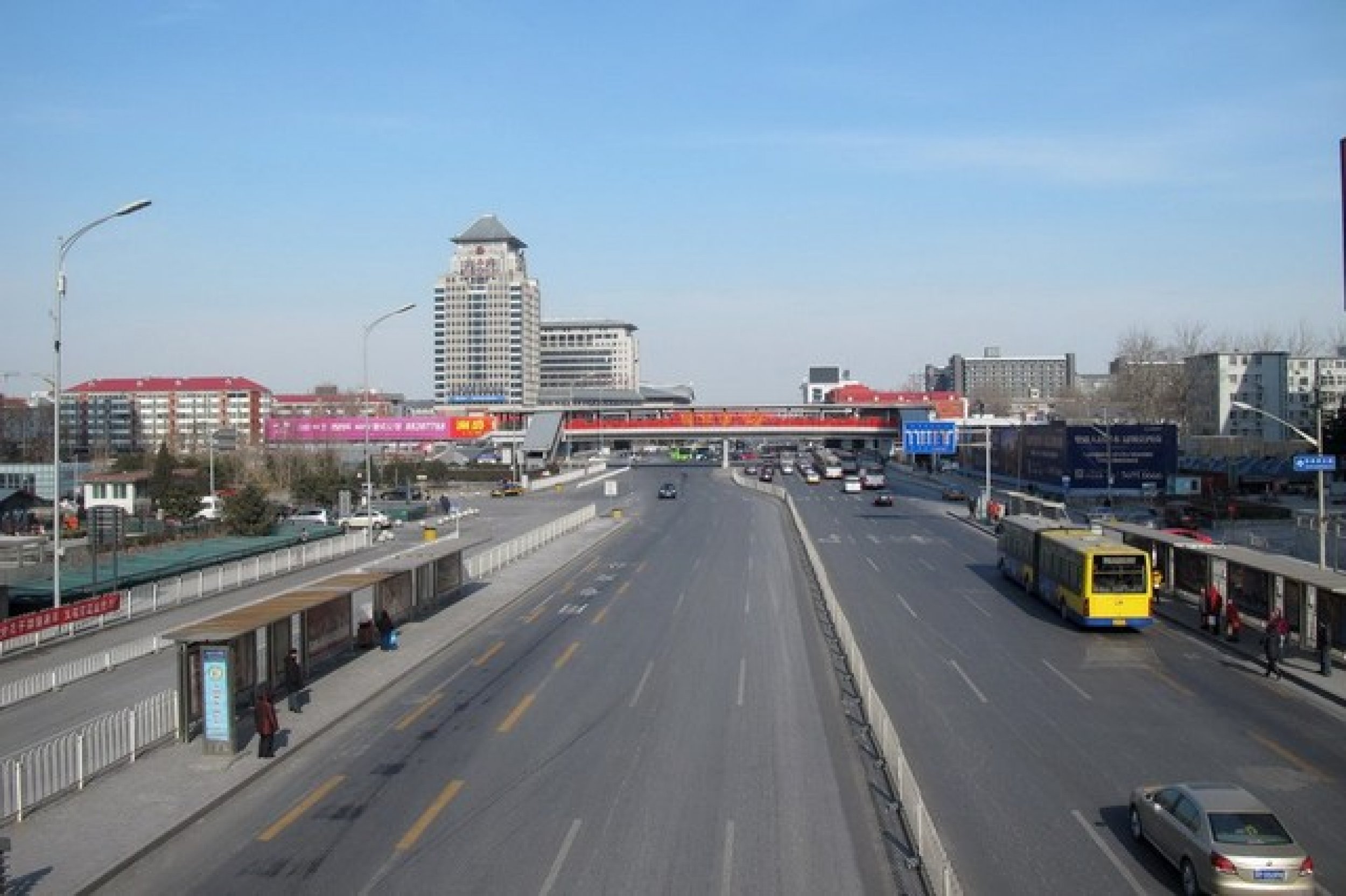Beijing Left A Ghost Town During Chinese New Year Travel Exodus [SLIDESHOW]
China is at the height of the world’s biggest annual migration of people, the Spring Festival traveling period or Chunyun, which surrounds the main holiday event of the celebration of the Lunar New Year.
Millions of residents of the biggest Chinese cities have taken trains, planes and cars to head home for the holidays. This has left cities like Beijing, normally bustling with over 20 million residents and 5 million cars, like a ghost town.
In a rare sight, Beijing’s usually traffic-ridden highways and busiest pedestrian streets are left deserted, waiting for vacationers to slowly trickle back into town.
The first five days of the Lunar New Year are official days off, leaving much of the cities' shops and businesses closed for the week. For the Beijing residents who decided to stay, the mass-exodus is probably a welcomed break from rush hour traffic or public transportation queues.
According to a survey by the Beijing Municipal Commission of Transport, 9 million people have left Beijing for the holidays—almost half of the entire population. The survey suggested that 7.74 million of those are residents in Beijing who are not natives of the capital and went to their original homes; the others have left for vacations, many at destinations like Macau.
It is tradition for extended families to gather in their hometowns, along with friends and sometimes coworkers to celebrate the Lunar New Year. Lighting fireworks, eating traditional food like dumplings, fish, and noodles, and exchanging gifts are customary ways of celebrating.
March 6 will mark the end of the 40-day long Chunyun peak travel season.





© Copyright IBTimes 2024. All rights reserved.












